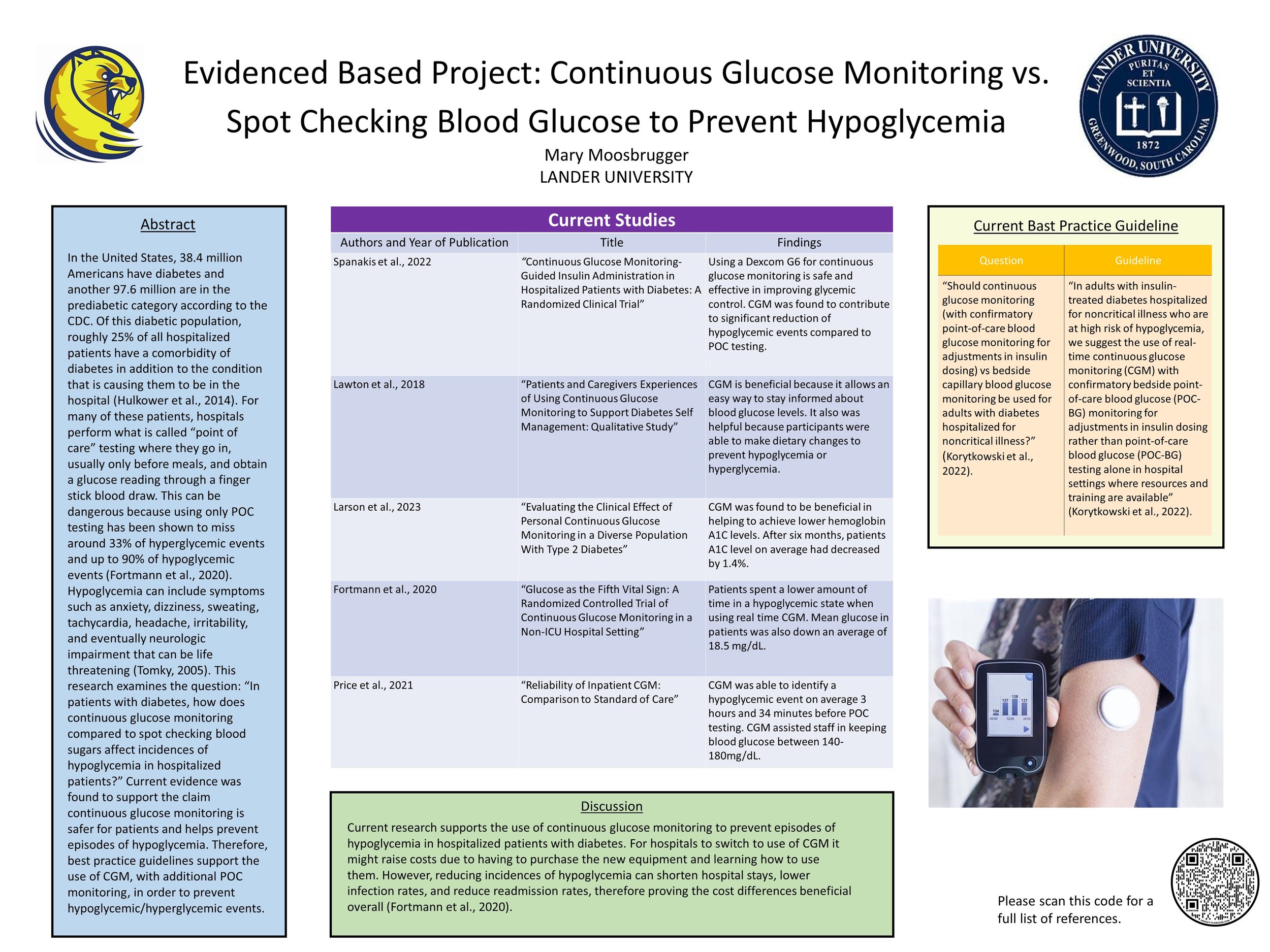Continuous Glucose Monitoring vs. Spot Checking Blood Glucose to Prevent Hypoglycemia
Mary Moosbrugger
Around one-fourth of the hospitalized population suffers from diabetes in addition to the condition that is causing them to be hospitalized. For many of these patients, this comorbidity complicates the care they receive. Patients can suffer from hyperglycemic episodes where blood sugars rise to high, or more dangerously, hypoglycemia. Symptoms of hypoglycemia can include neurologic impairment, anxiety, tachycardia, headache, irritability, etc. Medications patients receive while in the hospital can also cause blood sugars to drop into life-threatening parameters. The current hospital standard is point of care fingerstick glucose tests; however, continuous glucose monitoring allows medical professionals to keep a better eye on fluctuating glucose levels. This presentation explores the difference in using continuous glucose monitoring compared to spot checking blood sugars and how both methods affect incidences of hypoglycemia in hospitalized patients.
Mary Moosbrugger is a senior nursing major with a minor in psychology from Irmo, South Carolina. During her time at Lander, Mary was a member of the Women’s Soccer team as well as the Honors College. After graduation she plans to move to Charleston, SC and begin working as a Pediatric ICU nurse.
